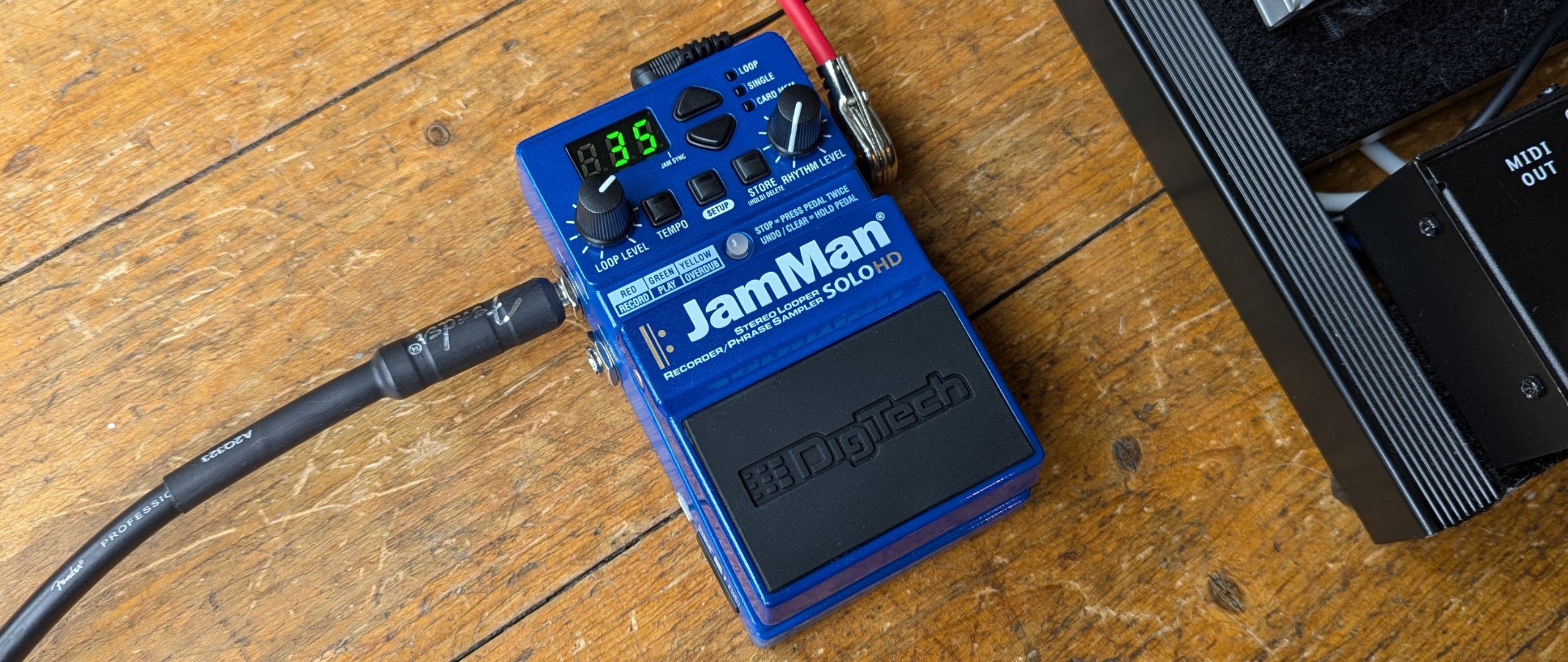MusicRadar Verdict
It’s not the easiest loop pedal to get started with, but once you’ve explored the manual the DigiTech JamMan Solo HD offers huge potential for a variety of looping needs. A powerful tool for the live guitarist, the huge storage and ability to load your own loops make it an instrument in its own right.
Pros
- +
Excellent amount of storage
- +
Load and trigger your own loops
- +
Built-in rhythm patterns
- +
Top-tier sound quality
Cons
- -
USB-C would be nice
- -
Not the most intuitive
MusicRadar's got your back
It’s been a couple of years since it was announced that DigiTech would be revived following its purchase by Cor-Tek, makers of Cort guitars. Aside from the DOD Overdrive Preamp 250, we’ve not exactly had the slew of reissue and fresh guitar pedals guitarists may have been expecting. As a big DigiTech fan, I’ve still got my fingers crossed for a Space Station reissue, but it was with some excitement that I got my hands on the all-new DigiTech JamMan Solo HD.
While there are many looper pedals around, not all are built equally. The JamMan in particular is sought after for its ability to pre-load loops that make it great for adding an extra bit of oomph to your live show. You can still get the XT second-hand, but at around twelve years old, it's getting pretty long in the tooth now.
If you prefer your pedals brand-new, then now's your chance to get your hands on one fresh out of the wrapper. Rather than being a total reimagining of its predecessor in the JamMan Solo XT, the Solo HD is in fact pretty much the same pedal with a few added extras on top. So is it worth your hard-earned cash? Let's find out...
DigiTech JamMan Solo HD review: Features
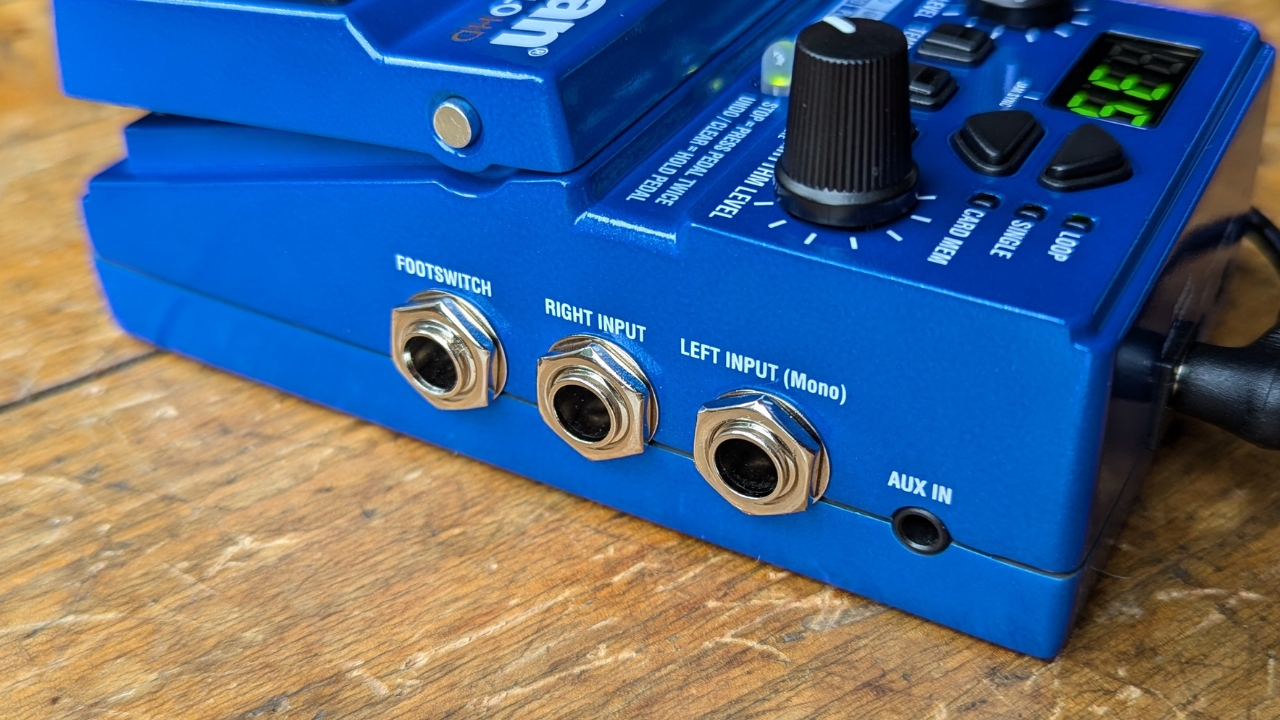
The headline feature of the JamMan Solo HD is that onboard looping time. Capable of 10-minute long loops with a total of 35 minutes of loop time and 200 loops in total, it’s likely overkill for most types of guitarist. If that doesn't sound enough for your needs, you can expand that with an external Micro SD card up to 32GB, giving you a maximum of 32 hours of loop storage capability. It’s a ridiculous amount of storage and all the loops are stored in 44.1 KHz, 16-bit which is equivalent to CD-quality.
For connectivity, it has stereo ins and outs which allow you to use more expansive sounding loops and better integrate with a wider variety of pedals. A footswitch out is available for use with the DigiTech FS3X footswitch that opens up selection of loop memories via your foot, tap tempo, and stop and clear function. A 1/8-inch aux-in gives you the option to link an external music player while the Jam Sync in and out lets you connect to another JamMan.
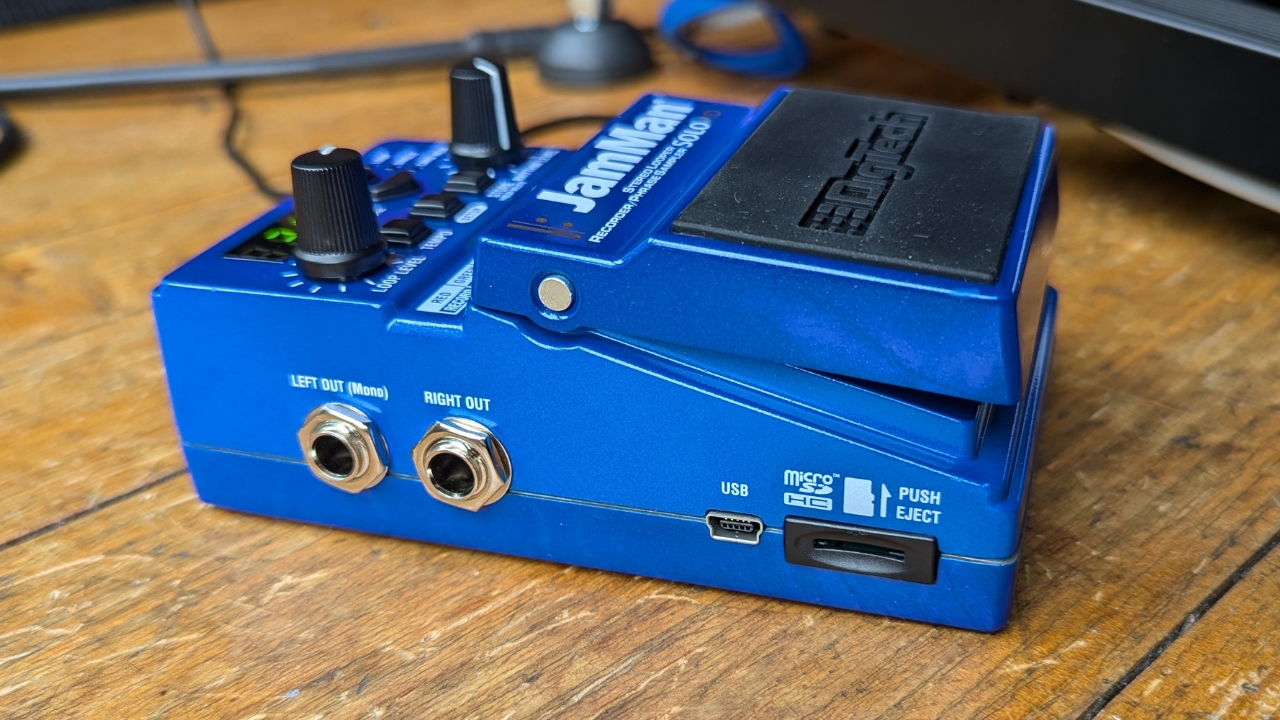
The front panel is quite busy, with two knobs for loop level and rhythm level bordering a selection of buttons. There’s a tap tempo, a setup button for extra menu diving, a store button for saving your loops, and up/down buttons for cycling through the loop memories. A single LED lets you know what mode the looper is in, with red for recording, green for play, and yellow for overdub.
Finally, there’s a mini USB connection for transferring loops to and from your computer, and the Micro SD card slot on the left of the pedal. There’s no SD card included, so you’ll need to purchase one separately if you’re planning on using the additional memory capabilities.
Want all the hottest music and gear news, reviews, deals, features and more, direct to your inbox? Sign up here.
DigiTech JamMan Solo HD review: Performance
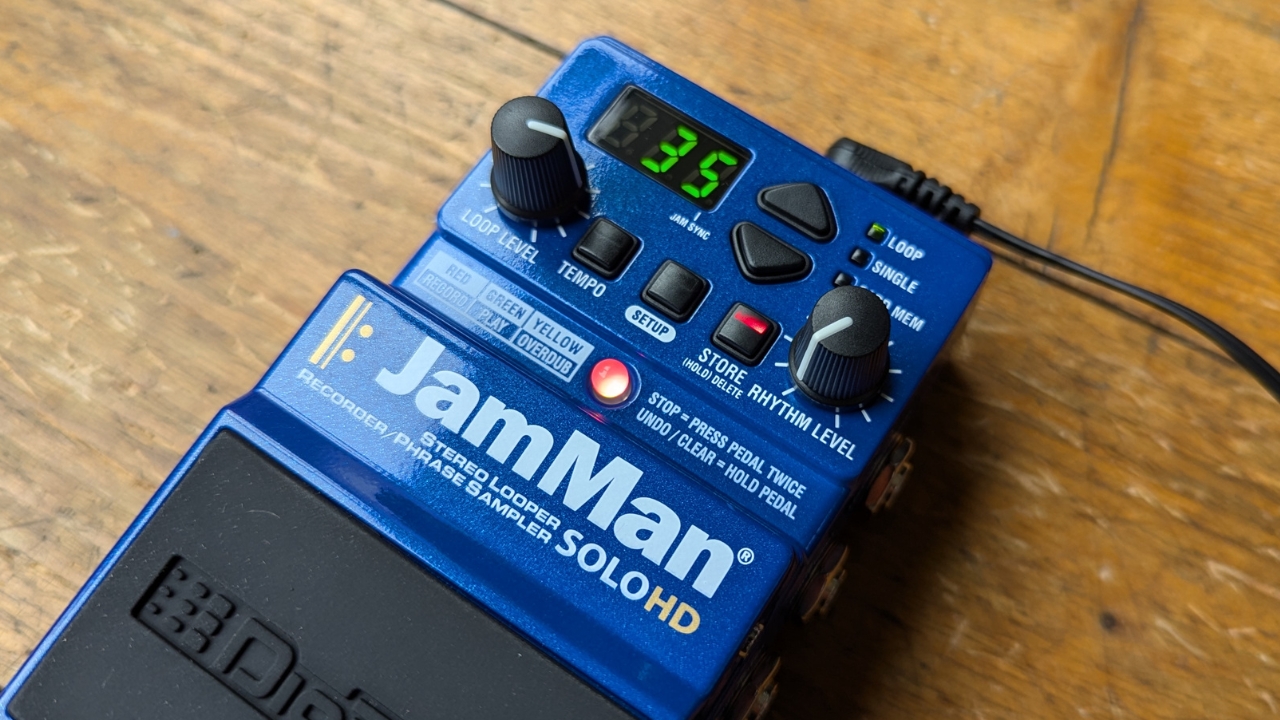
Armed with a Strat and my HX Stomp, I proceeded to loop with patch one, only to find there was a pre-loaded drum beat with it. Loopers are typically pretty simple to get going, but the JamMan is built a little differently. The first 15 patches have built-in rhythms that stay on irrespective of whether or not the rhythm level knob is turned down, which admittedly caused me some confusion at first.
Once you get to patch 16 you get a clean slate to loop upon, so that’s where I started my journey. Here the JamMan acts as your typical looper, with one stomp engaging the record mode, and a second single stomp starting playback. Another single press allows you to overdub, with a double tap stopping playback. It's immediately inspiring, like jamming with another player and I instantly found myself coming up with some nice post-rock-inspired melancholic rhythm and lead parts.
A long press of the pedal clears the current loops, but you can’t engage this until the loop is stopped and annoyingly, it restarts the loop whilst you’re holding it down. It’s a small thing, but something to note if you’re planning on using it for live looping, as you instantly get reminded of your mistimed loop or bum note when you go to clear the pedal.
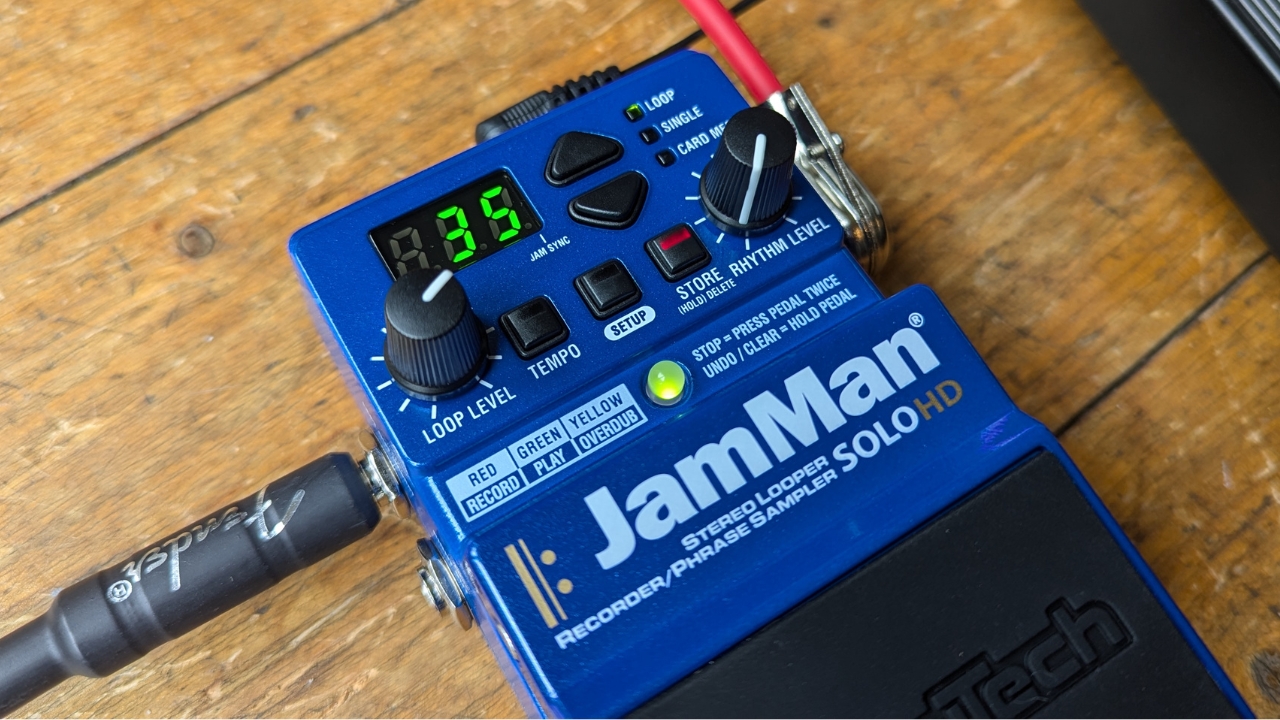
Heading back down the patch memory I decided to give the rhythm-backed loops another go to see how these fared. Here, you need to press once to get the loop going first, and as I found out, pay close attention to where the drum beat comes back around. If you start midway through the drum pattern, then your loop will only cover that particular part of the beat.
The patterns I tried all appeared to be on an eight-bar loop, and I actually ended up finding the flashing light on the tempo button to be quite useful as I hadn’t set the levels quite right and my guitar was dominating the loop itself. Certainly, something that could come in handy in a pinch onstage. It also allows you to chain rhythms together, as when you press the up and down button when a loop is playing, it cycles through the whole remaining loop before starting the next rhythm pattern.
The JamMan isn’t the most intuitive looper I’ve ever used, and you’ll definitely want to hit the manual before you get going. However - and I think this is where a lot of people historically have enjoyed the JamMan - for loading and triggering your own loops it's absolutely brilliant. Once you pop an SD card into the slot you’ll gain 200 extra memories, on top of the 200 built-in ones, and the ‘card mem’ LED lights up when you’ve got those 200 engaged.
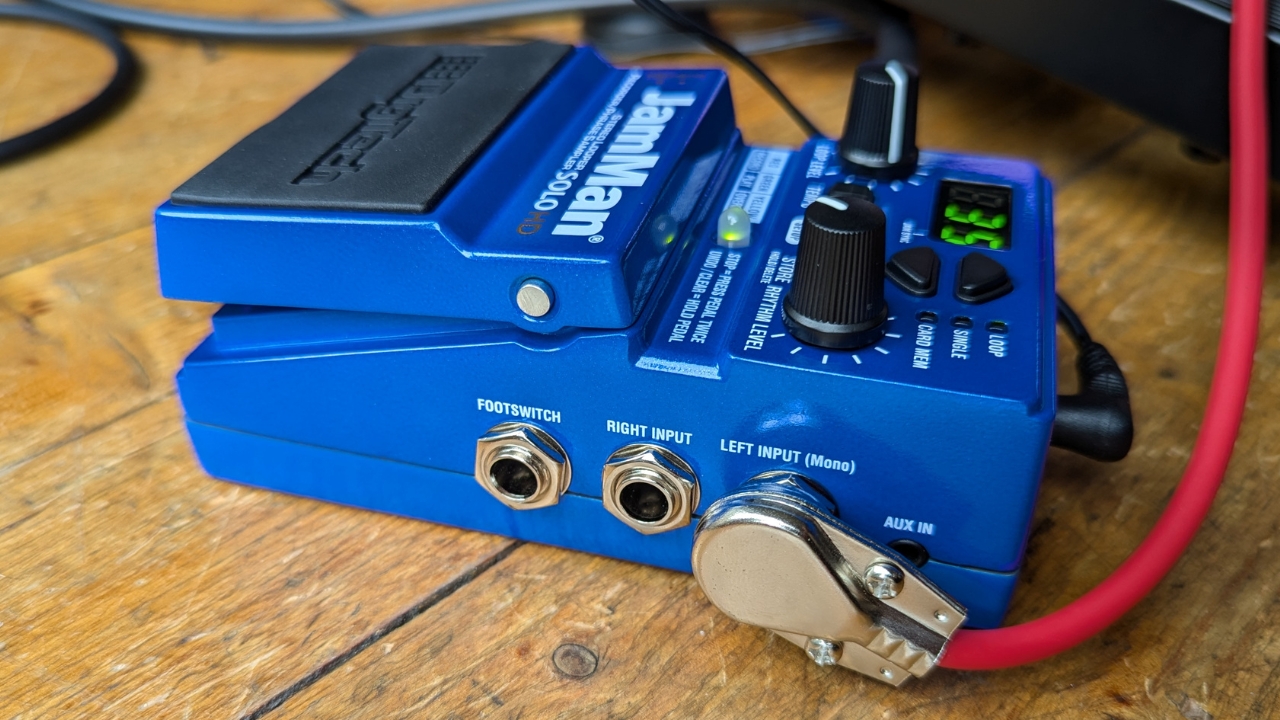
It’s a bit of a slog to get there, but you can hold the up and down buttons to make things a bit quicker. The pedal does also remember where you’ve left off, so if you’re exclusively using it this way then you only have to go through them all once.
Here, the JamMan becomes like an extra musician you didn’t know your band needed. I used it to launch some haunting drones that I could then play heavy drop-tuned riffs over. It’s fantastic in this format, whether you want to use it as a separate entity entirely from your guitar tone to send to front of house, or just add an extra touch of ominous tone by placing it in the FX loop of your amp.
There is a dedicated footswitch for use with the JamMan that unlocks some extra functionality, but out of curiosity, I tried my Boss FS-6 to see if it would do anything. I could only get one of my footswitches to work, but it allowed me to cycle through the presets one way which could be useful for those who have an existing footswitch and don’t want to reach down to cycle using the controls on the pedal itself.
DigiTech JamMan Solo HD review: Verdict
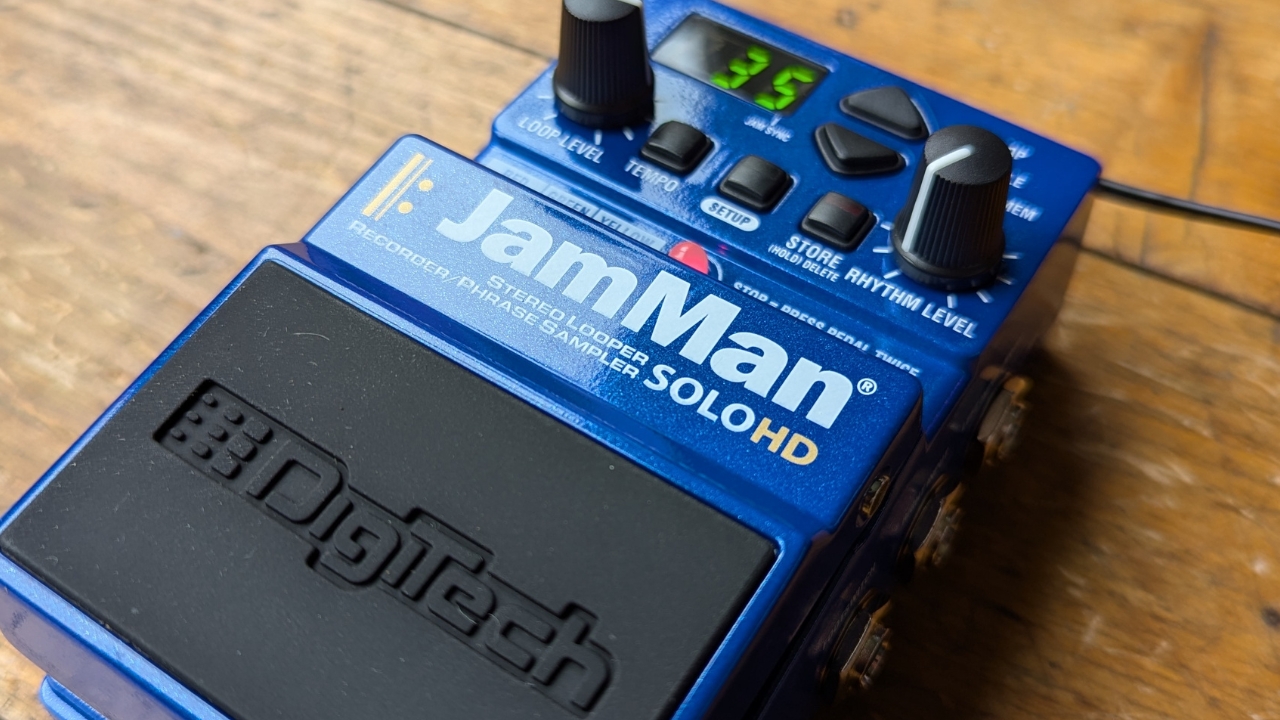
A welcome return to DigiTech’s stable of pedals, the JamMan Solo HD is not the most intuitive looper out there. Once you get under the hood though, you'll find a feature-packed and powerful loop pedal, with bags of potential in a variety of looping scenarios.
I can see it being super useful for those of us in power trios or bands with a single guitarist, allowing you to easily add an extra layer to your live sound. The flexible, stereo connectivity enables you to run it in many different ways, while the addition of an aux-in and the ability to chain multiple instances of the pedal will make it great for solo performers.
Digitech JamMan Solo HD review: Specs
- A/D/A Conversion: 24-bit/44.1kHz
- Max Loop Time: 10 minutes (stereo)
- Internal Memory: 35 minutes (up to 200 loops)
- External Memory: Micro SD up to 32GB
- External Memory Capacity: Over 32 hours (16GB SD card or larger)
- Controls: Pedal switch, loop level, tempo, setup, store, rhythm level, up/down buttons
- Connectors: 2x 1/4-inch TS input, 1x 1/8-inch aux in, 1x 1/4-inch TRS footswitch, 2x 1/4-inch outputs
- Power Supply: 9VDC 2.0 A
- Contact: DigiTech

Matt is a Junior Deals Writer here at MusicRadar. He regularly tests and reviews music gear with a focus on audio interfaces, studio headphones, studio monitors, and pretty much anything else recording-related. Matt worked in music retail for 5 years at Dawsons Music and Northwest Guitars and has written for various music sites including Guitar World, Guitar Player, Guitar.com, Ultimate Guitar, and Thomann’s t.blog. A regularly gigging guitarist with over 20 years of experience playing live and producing bands, he's also an alumnus of Spirit Studios, where he studied studio engineering and music production.
